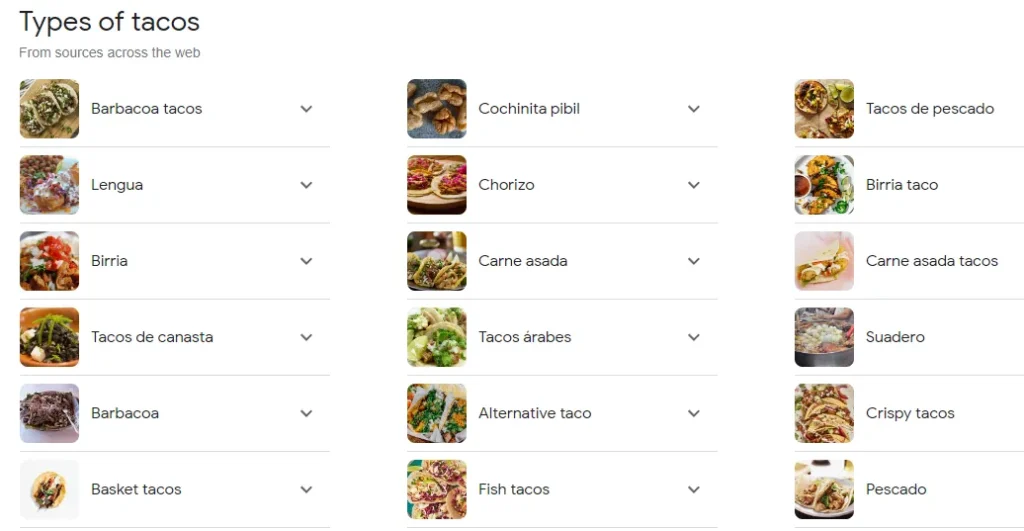Have you ever wanted to start a taco stand business and want to serve delicious tacos to your community? You are in the right place – whether a seasoned chef or a passionate cook.
This business idea can be the right option to start your venture and enter into the food industry; tacos are delicious and convenient to sell in your city, state, or region.
Starting a taco business is not as difficult as you think; it is a straightforward process that requires careful planning, research and selecting the potential target market.
With the growing popularity of street food and the love for Mexican cuisine, the market size is expected to grow 112.85 US billion dollars from (2021-2026) with a CAGR of 6.65%. (Source Technavio.com)

To succeed, you must develop a solid business plan and a menu plan and preparation for the best services focusing on customer demand and need.
Many enthusiasts want to start but are unsure where to begin. Don’t worry; let’s discuss it.
How to Start a Taco Stand Business – Guide

1. Choose a business model.
The first thing you need to consider is the business model – restaurant or food truck setup.
Analyze your suitability and how you want to set up your taco stand – it depends on the target market, budget, requirements, and facilities.
When you open a brick-and-mortar restaurant, this will be the permanent location where you can serve customers year-round. It is a stable, simple, and potentially good idea.
However, operating a taco stand in different locations, with a food truck setup, can also be the perfect decision. You can target high foot-traffic regions or areas with more foot traffic and provide a comfortable dining experience to customers.
The pros and cons of food trucks and restaurants:
| Feature | Food Truck | Restaurant |
|---|---|---|
| Startup Costs | Lower | Higher |
| Flexibility | Higher | Lower |
| Overhead Costs | Lower | Higher |
| Menu Options | Limited | Wider |
| Customer Reach | Relies on marketing and events | A stable location attracts customers |
| Brand Building | More challenging | Easier to build a brand identity |
| Regulatory Burden | Less stringent | More stringent |
No matter how you will set up your service, focus on a great recipe, and develop your strong foundation with a strategic business plan.
2. Conduct market research.
Proper research on the market is vital to understand the market demand, customer preferences, competition, and potential customer base and to find a high-potential region.
- The goal: Know your ideal customer – age, budget, taco desires, hangout location.
- Competition: Analyze other taco vendors, food trucks, and convenience stores.
- Trends: Stay on top of the latest cravings – traditional food, healthy options, and delivery.
- Don’t forget about permits, supplier costs, pricing, and how to get your name out there!
- Keep researching: Trends and tastes change, so stay ahead!
Don’t underestimate the potential of the research part; gather all essential data about tacos (flavors, unique ingredients, texture, types), which will help to stand out from the competitive market.
Thorough market research is essential for gaining a deeper understanding of the market and analyzing customer needs for your tacos.
To determine the needs, trends, and market potential, various methods of conducting market research are available.
Such as analyzing past growth data, examining online product selling reports, monitoring social media platforms, utilizing Google trend data, and researching local business selling reports.
Once you have the data about your target customer, the next step is to create a plan and product that will fulfill the customer/market needs and compete with the existing competitors.
Potential customers for tacos can be:
- Young adults
- Busy professionals
- Families
- Foodies
- Late-night crowds
- Social groups
- Location-specific: Offices, campuses, diverse neighborhoods.
3. Write a taco business plan.

While starting any business, including your taco stand, has many challenges and hurdlers; however, careful planning and a strong business strategy can lead to a profitable venture.
So, start with a great vision, putting in all your efforts, dedication, and research.
A business plan will be your roadmap or strategic path that helps you begin your taco stand business journey from a starting point.
When you consider writing a plan, some things need to be considered; include useful points in the written plan – business summary, product overview, target market, legalities, location, setup, pricing, staffing, supplies, marketing, management, etc.
- Executive Summary: Your taco stand, target audience, selling point, and financial goals.
- Market Analysis: Include details on target customers (age, income, location, eating habits), competitors (strengths, weaknesses), and industry trends (demand, unique ingredients, delivery trends).
- Operational: Outline the business structure (ownership, employees, roles), procedures (food preparation, safety, customer service), and business model (brick-and-mortar, mobile vendor, or catering).
- Marketing and sales: Write on marketing strategies (social media, local events, online marketing) and other promotional ways to attract customers.
- Financial planning: Estimate your startup costs (equipment, ingredients, permits), ongoing expenses (rent, utilities, payroll), and tacos pricing strategy.
Understand the basic and foundational points, focus on your goal, research, and develop a detailed plan. To learn more, read blog posts and check business plan templates.
4. Develop a taco menu plan.

Tacos are a traditional Mexican dish (soft or crispy), and making them requires meat, beans, cheese, lettuce, tomato, onion, and salsa, which also depends on texture and flavor.
When you plan to open a taco stand, there are various options and different types of delicious taco menu options to cater to diverse tastes and dietary preferences.
Classic Meat Tacos:
- Carne Asada
- Al Pastor
- Barbacoa
- Carnitas
- Chorizo
Seafood Options:
- Pescado
- Shrimp.
Vegetarian Delights:
- Raja’s con Crema
- Nopales
- Black Bean & Sweet Potato
Choose some from them, according to the target market demand and local food preference.
Develop a perfect recipe:
Explore different types of tacos, their ingredients, toppings, textures, and flavors, and add healthier options when creating a menu.
Prepare a menu chart – including different types of tacos, focusing on popularity, customer preferences, and local food demand.
Learn before starting:
Before making delicious tacos, learning the process and having the perfect recipe skills are important. Know what makes your tacos stand out? And create a plan about it.
So, first of all, develop your cooking knowledge by learning from different sources (online courses, offline training, connecting with experts, learning from practice, etc).
Unique fillings, fresh ingredients, or innovative flavor combinations are vital for a taco stand.
5. Find an ideal business location.

Finding a suitable location for your taco stand is an important step; high-foot traffic areas are also considerable, such as high-footfall areas near offices, parks, or entertainment hubs are ideal.
Consider the competition, demand, and popularity of tacos when choosing a location; if there are already many taco stands or Mexican restaurants in the area, attracting customers can be challenging.
Choosing an ideal location for your taco stand will depend on many factors, including your target market, competition, and budget. Also, you have to research a good location.
Some potential location ideas:
- Busy street/intersection
- Shopping center/mall
- Business district/office park
- Tourist attraction/landmark
- College/university campus
- Food court/farmers market
- Community event
- Park and public space
- Residential neighborhood
Research, think, understand, and identify high-potential areas where you like to sell your tacos.
Don’t pick new business locations; try to find existing market areas where there is already a demand for restaurants, breakfast, dishes, and other related shops.
Also, before deciding, consider rental costs, zoning regulations, parking areas, and facilities.
6. Calculate the startup costs.
Calculate the startup costs for your taco stand business.
It can be difficult to accurately estimate the budget because many factors are dependent, such as ingredient costs, supplies, equipment costs, rental fees, licensing, insurance, workforce, marketing, and utility expenses.
- Equipment costs: Need to buy necessary equipment for the taco stand: cooking equipment, utensils, and plates.
- Rental fees: If you plan to set up your taco stand in a popular location (restaurant setup), you may need to pay rent for a space.
- Licensing: To legally operate your taco stand need to obtain licenses and permits, which can cost between a few hundred dollars.
- Insurance: It is important to protect your business from liability losses, damages, equipment breakdown, and other coverage.
- Workforce: For hiring a workforce, you may need some investment; the cost of the workforce will depend on the number of employees you hire and their salaries.
- Marketing: In marketing, costs involve creating a website, using social media, or running ads. Depending on your marketing strategy, this can cost between $500 to $1,000.
- Utility Costs: Such as electricity, water, and gas, completely depend on your location, and the cost will be between $100 to $500 per month.
There is no fit answer to the question “How much does it cost to start a taco stand business?” opening a taco stand requires different requirements, so the startup cost also varies on these factors.
To calculate the expenses, develop your business plan goals, write down necessary supplies, and create a detailed financial plan. Consult experts, financial accountants, or business planners for discussion on this matter.
Costs range from $10,000 to $50,000; location, business size, menu, equipment, permits, and more all influence the final figure.
7. Come up with a business name.

A good business name and your logo play an important role in creating a brand; also, with the help of a business name, you can promote and market your service.
Also, having a memorable business name can give you a competitive advantage in a crowded market, helping you stand out from other taco stands in your area.
So when you come to choosing a name for your taco stand, the same thing you should follow the given easy steps, that will help you to find a company name.
The name should be memorable, short, easy to remember, service-related, and web-friendly. Make sure a domain name is also available with the name.
8. Purchase your equipment and supplies
To start a taco business, you need to buy some essential equipment and supplies, so before shopping for them, you have to make a list of all those supplies and ingredients.
This may include a commercial-grade range, deep fryer, grill, refrigeration units, serving utensils, disposable plates and cutlery, and more.
Once you have a list of the tools and materials you need, determine your budget. This will help you prioritize your purchases and ensure you stay within your budget.
Next, research suppliers that sell the equipment and supplies you need. You can do this online, or you can visit local restaurant supply stores.
Remember that the cheapest option may not always be the best choice.
Consider factors such as the supplier’s reputation, the quality of the equipment and supplies, and the supplier’s return policy.
Basic taco business equipment:
Cooking:
- Grill
- Griddle
- Steamer (optional)
- Food processor/blender
- Tongs, spatulas, knives, cutting boards
Storage:
- Refrigerator
- Freezer (optional)
- Storage containers
Serving:
- Taco holders
- Serving utensils
- Plates, napkins, utensils
Other:
- Trash cans & liners
- Cleaning supplies
- Paper towels & toilet paper
- Menu signs & prices
- Depending on the setup – you’ll need cooking equipment, coolers, food stands, or trucks. Prioritize food safety and hygiene regulations.
- Suppliers (for buying ingredients): Find reliable sources for fresh, high-quality ingredients at competitive prices.
9. Obtain licenses and permits.
To run the taco stand business legally and effectively, business licenses, permits, insurance, and a bank account are important steps to a successful business.
Get business permits:
Obtaining the necessary permits for your business, such as a food service permit or building permit, ensures that your operation is safe and meets health and safety standards.
Obtain business insurance:
Securing insurance for your business, such as liability insurance or workers’ compensation insurance, can help protect your business and your assets in the event of an accident or unforeseen circumstance.
Open a bank account:
Setting up a dedicated bank account for your business is important to keep your finances separate from your business finances. Also, you can easily track expenses, income, and cash flow.
To make sure you complete these steps correctly, it is recommended to get guidance from legal or financial professionals or consult with your local government for specific requirements in your area.
- Register your business and obtain the necessary licenses and permits.
- Consult a local accountant or lawyer for guidance.
- Insurance: Protect yourself with liability and property insurance.
10. Create a strong marketing strategy.

The next important step is to plan your marketing strategy carefully: advertising in local newspapers and on social media.
Also, you can attract more customers by promoting the shop/service at events, providing free samples, and distributing business cards.
To effectively market a taco stand business, you will need first to identify the target audience and their preferred communication channels.
Marketing strategies to promote a taco stand (focus on those things):
- Quality ingredients – Ensure fresh, high-quality ingredients for delicious tacos.
- Unique taco creations – Create distinct and innovative taco recipes.
- Branding and logo – Develop a memorable visual identity.
- Social media presence – Utilize platforms like Facebook, Instagram, and Twitter.
- Local SEO – Optimize online presence for local searches.
- Website – Include menu, location, and online ordering.
- Customer reviews – Encourage positive reviews and respond professionally.
- Online advertising – Use targeted ads on platforms like Facebook and Google.
- Email marketing – Send newsletters with updates and special offers.
- Mobile-friendly – Ensure website and ordering are mobile-responsive.
Social media platforms like Instagram and Facebook can be used to showcase the menu and promote any special offers or promotions.
Brandings such as logo design and packaging can establish a strong visual identity. Participating in local events or festivals can also help increase visibility and attract potential customers.
Word of mouth can be powerful, so ensuring a positive customer experience through quality food and excellent service can encourage customers to spread the word and generate repeat business.
Marketing: Utilize social media, local listings, food truck events, and collaborations to reach your target audience.
11. Hire staff to manage the service
To run your successful taco stand business, you need a proper plan for building a high-performance team; this venture includes many types of roles for managing & running and needs some workforce.
Here are a few steps that you can follow to build a successful team for a taco stand; still, it depends on your size of business and customer base.
How you can hire your staff:
- Define the roles and responsibilities
- Determine the skills required
- Recruit candidates
- Conduct interviews
- Train your team
- Foster a positive team culture.
Type of staff needed for a taco stand:
- Chef or cook
- Cashier
- Server
- Manager or supervisor
- Cleaner or janitor
- Marketing and sales staff (optional)
In today’s digital age, the importance of software is essential to running a business.
From point-of-sale (POS) systems to inventory management software, having the right tools can help streamline operations, reduce costs, and improve customer service.
When you start the tacos business, you must get a subscription to some essential software that will help you manage and grow the business.
Research to find the best software and other related information.
Frequently Asked Questions (FAQs)
What is the profit margin on tacos?
The profit margin on tacos can vary greatly depending on several factors, making it difficult to give a single answer. Street taco stands: Profit margins can range from 20% to 40%.
What equipment is needed for a taco restaurant?
To start a taco restaurant, you need some basic kitchen equipment, food preparation equipment, serving equipment, a table chair, and others.
Do I need a permit to sell tacos?
Yes, you need food-related permits and a license to sell tacos. Make sure to research local legal requirements and consult legal advisers to find the best.
Is selling tacos profitable?
Yes, selling tacos can be a profitable business. However, the success and profitability of a taco business depend on your target location, quality of food, pricing, marketing, and competition. Open your shop in a high-foot-traffic area and provide high-quality service.
Final thought
When you start a new venture, the important thing is dedication, patience, and hard work. Every business owner should also be curious to learn a new strategy.
Mexican tacos are a delicious and demanding food option to start the business; we’ve included all the essential steps in this blog post and also guided you through the step-by-step process.
I hope you got the useful information, still, If you have any doubts, ask me in the comment.
Related blog posts:





